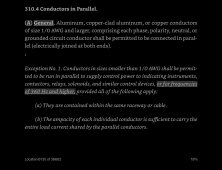Roswell Bob
Solar Enthusiast
Good analysis.I think I agree about the spit phase approach ...after doing more research and finding real world prices.
A sungold 6kw split phase is 1199 right now. Where as two transformers will likely run me 1500. ...and add two more parts into the system.
I spoke to my contractor and he feels confident in our ability to run another set of conductors. Those would give us 2x 10awg solid copper. Or bigger
I like the idea of bumping the voltage up to 480vac for transmission, but transformers are expensive, and 480v scares some people.
Split phase is worth a good look. Do you have 10-3 and a ground? I think you can drive a ground rod in at the cabin and create ground there with your 10-3.
Is a Sungold inverter a good name? Is it a listed component? Do you need any agency listing?
I agree - Propane appliances are popular with limited electricity. Your applances are killers.
Have you given any thought to a simple buck-boost transformer? Bump the voltage up by 10% and call it a day.




